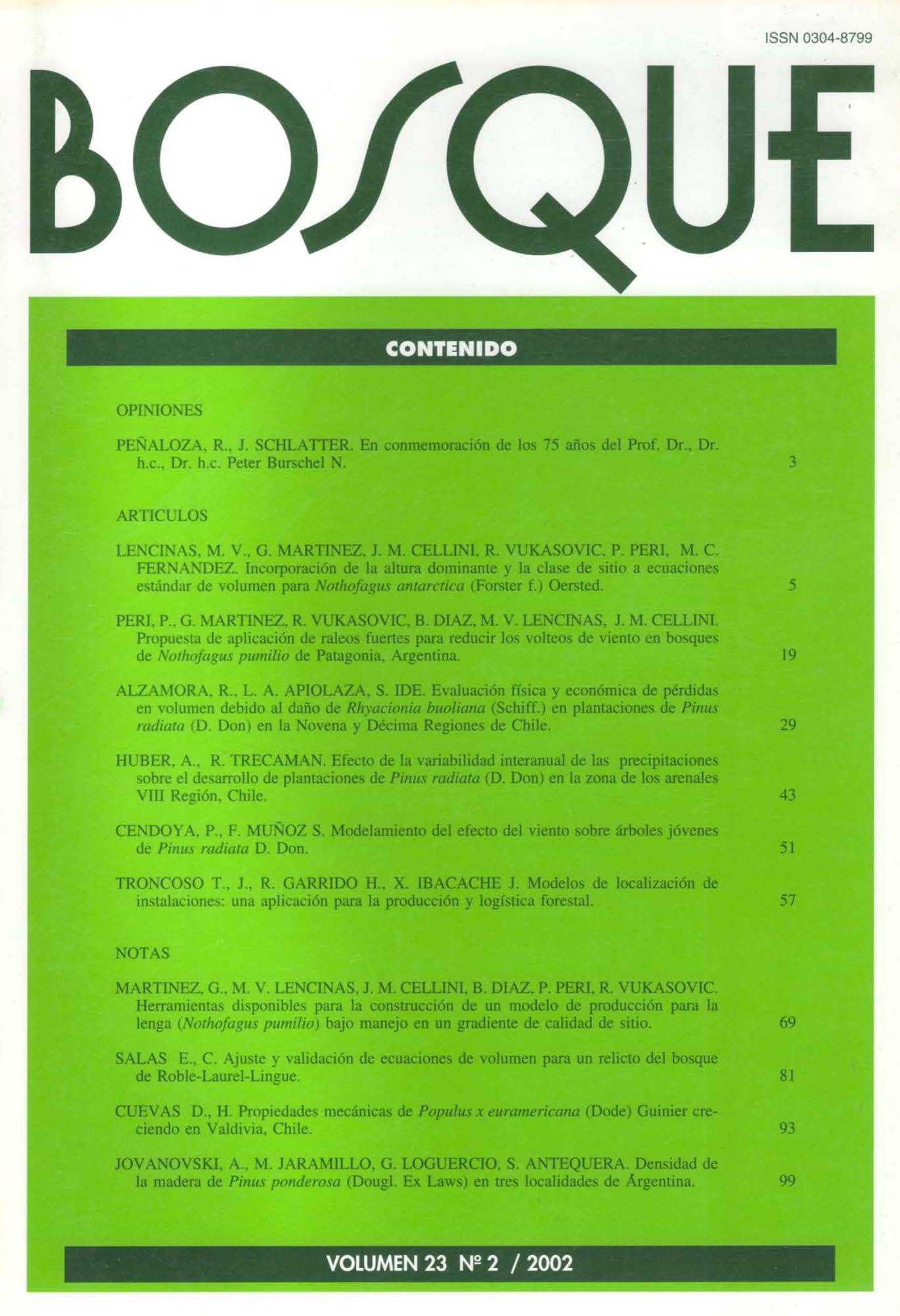Incorporation of dominant height and site class in standard volume models for Nothofagus antarctica (Forster f.) Oersted
Main Article Content
Abstract
The estimation of forest productivity is carried out using the tree volume, which is estimated directly or by using relationships or equations. Foresters must design methodologies that increase the precision and diminish the costs of carrying out a forest inventory. For these reasons, the objectives of this study were, first, to define new standard volume models (total and stem) and, secondly, to analyze their behavior in comparison to traditional models (local and standard) through their statistics and residual analysis (according to site and diameter classes). Two hundred and fifty-one specimens of Nothofagus antarctica throughout Tierra del Fuego (Argentine) were used, having the diameter at breast height (DBH) 7.5-61.0 cm and total height 3.5-15.0 m. Local functions (V =ƒ (DBH)), traditional standard equations (V = ƒ (DBH, TH)), non-traditional standard equations (V = ƒ (DBH, site class)) and a new proposal (V = ƒ (DBH, dominant height)) were fitted. All functions gave a good fit. Total volume models presented average percentage errors varying between 1.0% and 3.8%, and absolute values between 15% and 17%. Stem models showed average percentage errors of 1.1% to 4.1%, and absolute ones of 19% to 24%. The traditional equations result in lower absolute error while the non-traditional volume equations have lesser average percentage errors and show different behavior when site and diameter gradients were analyzed. If one considers the effort required for data capture during the forest inventory and the precision of the model for volume calculation, the non-traditional volume equations are the most suitable for this purpose. These avoid the necessity of measuring the total height of individual trees during the inventory, diminishing the costs while maintaining acceptable error levels in the estimation of volume.

